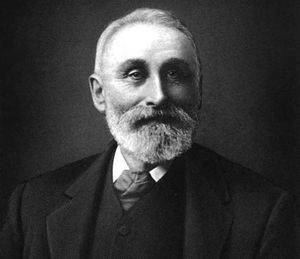Nationality American Political party Republican Party Died June 13, 1897 | Name John Curtis Occupation businessman Resting place Portland | |
 | ||
Born October 10, 1827 Hampden, Maine Known for made the first chewing gum prototype for commercial use Spouse(s) Alice Charlotte Bacon
married 13 August 1878 Parent(s) John Curtis
Mary B. Bacon Relatives siblings:
Charles H.
Mary E. | ||
John B. Curtis
John Bacon Curtis (October 10, 1827 – June 13, 1897) was an American businessman from Maine.
Contents

Early life

Born in Hampden, Maine, Curtis attended the normal schools while growing up. He never graduated, but instead worked for the family and others to earn a living. He first was making five dollars a month, which was later increased to six and eventually he worked his way up to twenty-four dollars a month. In addition to being a farmhand he worked as a swamper, clearing underbrush and making roads through the woods.
Mid life
Curtis thought it would be practical to use spruce resin, beeswax and flavorings to make spruce gum as a chewing gum. His family moved to Bangor in 1848, where there would be a better market for such a product. Over a Franklin stove in the Curtis home, they cooked up their first batch. The label they printed on their new product read "State of Maine Pure Spruce Gum."
Curtis made a sufficient production of his gum and went to market it in Portland, Maine. This was the first commercial production of chewing gum. For the first two days in Portland he had no luck selling this new product to merchants. The third day he finally made a sale, but it was a hard sale because of the annoying nature of the product. There was very little market for the product in Portland in 1848 and 1849. Curtis decided to become a traveling salesman starting in 1850, selling additional products like patent medicine. His motto was "Give a man all you can for his money, while making a fair profit yourself."
Curtis was quite ambitious and many times would travel well into the night just to get to the next town before his competition. This way he would have most of that town's business as the wholesale peddler, since the most active would get the principal patronage. The first year he traveled all throughout New England and earned six thousand dollars. Eventually Curtis advanced from being just a peddler to a commercial sales traveler, and included the West into his territory: areas west of Maine such as Pennsylvania, Ohio, Minnesota and Missouri. He traveled on the Erie Canal and down through the Mississippi River and Ohio River. He would even extend credit for as much as a year. In the United States he was one of the first, if not the very first commercial sales broker as a representative of an Eastern business marketing firm.
Curtis's father attended to the making of the chewing gum product while Curtis travelled to sell it. His father had his men pick the gum from the trees. After a week or two of collecting the raw product, they would bring it out of the woods to the Bangor factory for processing. The business did quite well and the fifteen square foot processing area became too small. They then moved their chewing gum business to larger facilities at Portland, Maine. A few pounds of raw material was adequate in their first years; however, later they bought up to ten tons of material at once. This was considered very risky. One day Curtis even purchased $35,000 worth of raw gum material, considered probably the largest transaction in that type of business ever made in the nineteenth century.
Curtis and his father's firm, "Curtis & Son," eventually increased the business to occupy a factory that was 51 x 145 feet (44 m) in area and three stories high. They employed 200 people, who turned out eighteen hundred boxes of chewing gum in a day. Curtis himself invented most of the machinery used in the production process. He never took out a patent on any of his inventions. The firm instead kept secret their process of making chewing gum. Some of the spruce gums Curtis & Son made were called "American Flag," "Yankee Spruce," "White Mountain," "200 Lump Spruce," "Licorice Lulu," "Trunk Spruce", "Sugar Cream," "Four-in-Hand," and "Biggest and Best."
Later life
In 1872, Curtis went into the dredging business. He worked on jobs that ranged from $50,000 to a half a million dollars. He was successful at this business as well. He later opened a shipyard and built ten large ships. He also owned the controlling interest in the ferry between Portland and South Portland and a line of steamers until 1896. Curtis was even in the silver and coal mining business in Maine. In 1880, Curtis was in the farming business on a grand scale near Gothenburg, Nebraska. Here he owned over 1,500 acres (6.1 km2) where he raised Hereford cattle.
In 1878, Curtis bought the largest and most expensively built house in Deering Center, Maine. During the last months of his life he took an interest in ancient Egypt and the pyramids. His creed was "do good."
In his will, Curtis bequeathed funds to the town of Bradford for the construction of a library. That library is named the John B. Curtis Free Public Library in his honor, and is listed on the National Register of Historic Places.
